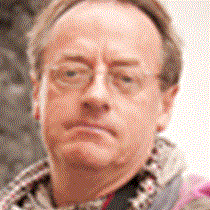Butrint, Sarande & Porto Palermo, Albania
Anchored a couple of miles offshore we loaded the Zodiacs in the early morning and slowly voyaged along a two mile channel leading to the entrance of one of the most impressive multi-period archaeological sites on the whole of the Dalmatian coast. Butrint was originally founded by the Greeks in the fifth century BC who dedicated it to Ascelpus, the God of medicine. It lay within the ancient region known as Epirus. Their settlement was later to flourish under the control of the Romans to become a thriving, wealthy town with a multiplicity of temples, baths and other public and private buildings. In succeeding centuries Byzantine and Ottoman rulers added their indelible cultural expressions on Butrint. The site was included in 1992 in the UNESCO list of World Heritage Sites following the collapse of the communist reign in Albania. Archaeological excavations first took place in 1928 and the Italian dictator Mussolini, who was particularly interested in Roman associations, sponsored work on the site until 1941 when war halted exploration. The work revealed a complex and extensive site of which only about forty percent has been excavated to date. Our guides took us on a captivating walk through the remains, highlighting many aspects of its architecture and erstwhile social and commercial activities. A museum was recently opened on the site and houses a rich array of artifacts recovered during excavations including amphorae, delicate glass bottles, coins and small clay lamps in addition to an outside annex displaying a number of marble statues and fragments of carved building fabric. Study of the large assemblages of marine shells and butchered animal bones from the site have provided a detailed insight into the diet and food resources exploited by the inhabitants of this once vibrant town. In the late morning we drove by coach to the outskirts of Sarande where we had refreshments at a restaurant perched high on a hill and enjoyed the commanding view of the bay and surrounding coast before returning to the ship for a well-earned lunch.
The afternoon was spent engaged in a variety of water based activities along the cove necklaced shoreline of Porto Palermo. Sunset was watched from the vantage point of the battlements of nearby Ali Pasha's citadel, the one-time governor of the surrounding territory. Candles and oil lamps lit the way through the corridors and staircases of the castle creating an almost medieval atmosphere, a feeling accentuated by a musician playing a traditional wind instrument. The hotel manager and his staff topped the day with a scrumptious combination of Albanian appetizers and drinks which were appreciated by all as the sun declined and an almost full moon rose above the dramatic outline of ancient limestone ridges dominating a rose tinged sky.
Anchored a couple of miles offshore we loaded the Zodiacs in the early morning and slowly voyaged along a two mile channel leading to the entrance of one of the most impressive multi-period archaeological sites on the whole of the Dalmatian coast. Butrint was originally founded by the Greeks in the fifth century BC who dedicated it to Ascelpus, the God of medicine. It lay within the ancient region known as Epirus. Their settlement was later to flourish under the control of the Romans to become a thriving, wealthy town with a multiplicity of temples, baths and other public and private buildings. In succeeding centuries Byzantine and Ottoman rulers added their indelible cultural expressions on Butrint. The site was included in 1992 in the UNESCO list of World Heritage Sites following the collapse of the communist reign in Albania. Archaeological excavations first took place in 1928 and the Italian dictator Mussolini, who was particularly interested in Roman associations, sponsored work on the site until 1941 when war halted exploration. The work revealed a complex and extensive site of which only about forty percent has been excavated to date. Our guides took us on a captivating walk through the remains, highlighting many aspects of its architecture and erstwhile social and commercial activities. A museum was recently opened on the site and houses a rich array of artifacts recovered during excavations including amphorae, delicate glass bottles, coins and small clay lamps in addition to an outside annex displaying a number of marble statues and fragments of carved building fabric. Study of the large assemblages of marine shells and butchered animal bones from the site have provided a detailed insight into the diet and food resources exploited by the inhabitants of this once vibrant town. In the late morning we drove by coach to the outskirts of Sarande where we had refreshments at a restaurant perched high on a hill and enjoyed the commanding view of the bay and surrounding coast before returning to the ship for a well-earned lunch.
The afternoon was spent engaged in a variety of water based activities along the cove necklaced shoreline of Porto Palermo. Sunset was watched from the vantage point of the battlements of nearby Ali Pasha's citadel, the one-time governor of the surrounding territory. Candles and oil lamps lit the way through the corridors and staircases of the castle creating an almost medieval atmosphere, a feeling accentuated by a musician playing a traditional wind instrument. The hotel manager and his staff topped the day with a scrumptious combination of Albanian appetizers and drinks which were appreciated by all as the sun declined and an almost full moon rose above the dramatic outline of ancient limestone ridges dominating a rose tinged sky.




